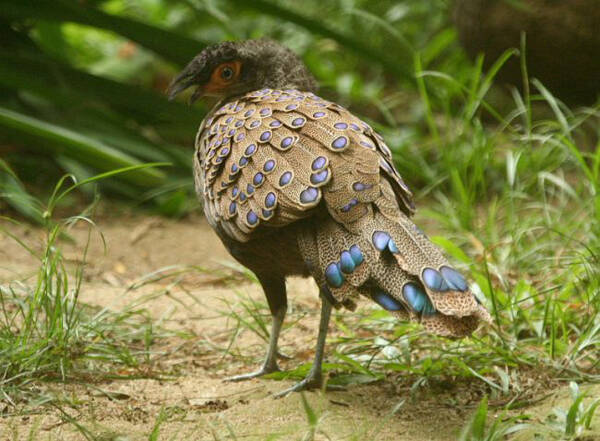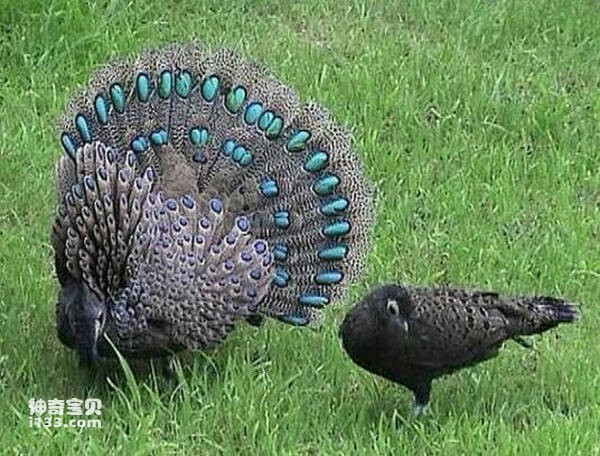Polyplectron malacense
IUCN
LCBasic Information
Scientific classification
- name:Polyplectron malacense
- Scientific Name:Polyplectron malacense,Malay Peacock-pheasant
- Outline:Landfowl
- Family:P.Genus P.family
Vital signs
- length:40-53.5cm
- Weight:No textual research information is available
- lifetime:No textual research information is available
Feature
The body is brown with black spots, and the crest is long and dark blue-green
Distribution and Habitat
Found in lowland forests of Malaysia. They were once widespread in Malaysia and Thailand, and have been found in Myanmar, Singapore, and Sumatra. It has disappeared from most areas, with the rest confined to central Malaysia.
Origin: Malaysia; Possible extinction: Thailand; Regional extinction: Singapore; Unknown source: Myanmar.
It inhabits flat or gently sloping slopes in primary or secondary lowland forests, usually ranging from 15 to 80 m above sea level, never exceeding 300 m.
Appearance
The Malay Peacock pheasant is a medium sized pheasant. Length 50-53.5 cm for males and 40-45 cm for females. The body is brown with black spots, the crown is long and dark blue-green, the red face has no feathers, the pupils are blue-white, and the upper body and tail feathers have large green eye markings, a total of 22 tail feathers. Females are smaller and darker.
In contrast to the similar species, the Gray Peacock pheasant, it has a darker brown color and more green spots. The crown is long, with a dark green sheen, the back is black, with darker earmuffs (in contrast to the lighter surround), and the facial skin is orange-pink. The female's tail is smaller and shorter, with a very short crest, blacker and sharper spots, more delicate scales above, a more uniform underbody, and yellower facial skin.
Details
The Malay Peacock pheasant (Polyplectron malacense) is a medium sized pheasant with no subspecies.

Malay peacock pheasants often live alone or in pairs, mostly on the wet ground where the forest is dense and the vegetation under the forest is more developed, and the activities are more frequent in the morning and afternoon. Sex is alert and timid. Male birds are particularly cautious when they are active, generally quietly, and often stand still and pay attention when they find something unusual. Found danger, immediately screamed and fled, burrowed into dense brush or grass, generally do not take off. When danger is near or imminent, they flee by flight. Generally, they do not fly far, usually land tens of meters, and continue to run to escape after landing. They rarely fly into trees, but they roost in them at night. The call is short and loud, and it gets louder as it gets louder.
The pheasant mainly feeds on invertebrates, such as snails and insects, and possibly seed insects, worms, and plant stems, leaves, fruits, and seeds. Mainly on the ground to eat, use the mouth to peck, occasionally with the feet to find.

Male birds make a loud, slow, melancholy puu pwoii (second note more rising) sound in their territory. In addition, there will be a sudden burst of screaming, and the voice running through the throat is: tchi-tchi-tchao-tchao wuk-wuk-wuk-wuk-wuk.
Malay peacock pheasants start to breed from late February to early March. More nesting in dense forest gully land and mountain farmland near the secondary forest, the nest in the natural concave ground. Breeding in March to May, laying 2-5 eggs per nest, incubation period of 21 days.
The encroachment and destruction of lowland forests (especially rubber and palm oil plantations) by human cultivation is a major threat to the Malaysian peacock pheasant. By 1970, the Malay peacock pheasant had lost 75% of its habitat. As a result, this pheasant population is rapidly declining, its endemic lowland forest habitat is gradually eroding, and the rest of the population is increasingly dispersed. It is thought that hunting for food and the bird trade have contributed to the possible extinction of the species in Thailand, but there is no evidence as to whether the Malay peacock pheasant is protected in Malaysia.
Listed on the International Union for Conservation of Nature (IUCN) 2016 Red List of Threatened Species ver 3.1 - Vulnerable (VU).
Listed in the Washington Convention CITES Appendix II protected animals.
Protect wild animals and eliminate wild meat.
Maintaining ecological balance is everyone's responsibility!








